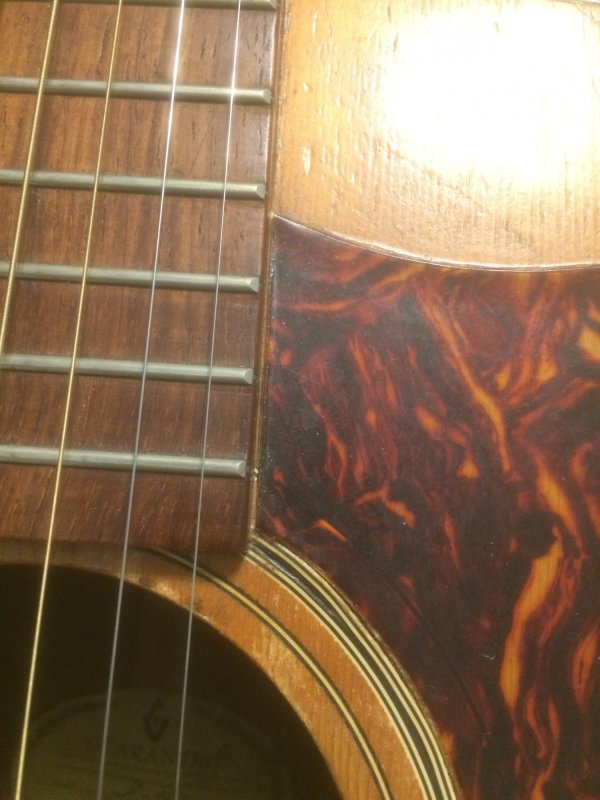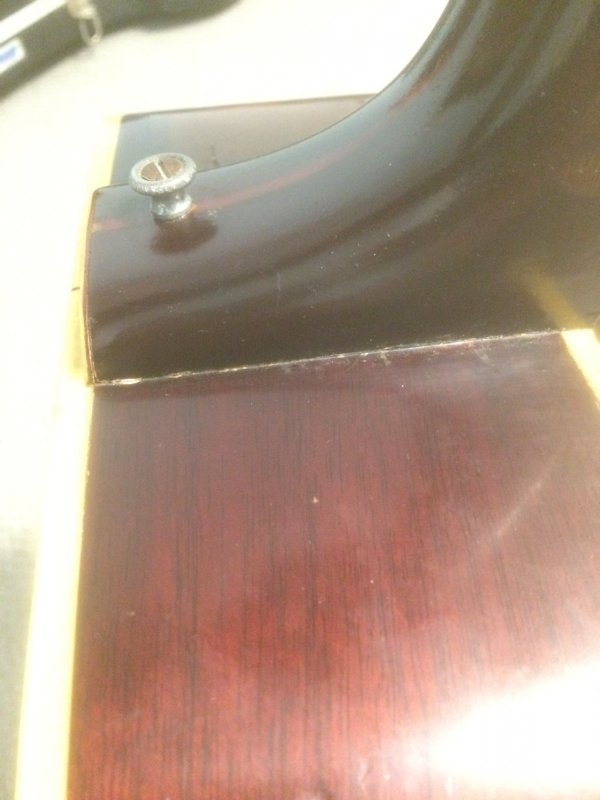Look at this video:
This is an older Harmony H165, nothing to do with you guitar in many ways. However, he does some things during the neck reset process to try and get the high E string to sit further inside the fretboard. In this case, the measurements shiw that the bridge IS offset to one side (sort of typical of Harmony), easy to do on a guitar with no center seam, and a string through bridge, especially at the rate at which Harmony was building guitars during that time period, Youe guitar DOES have a center seam (and why I asked about it being centered between the 3rd and 4th string).
The neck looks like it has been reset before, to me. It also, from the pick guard picture, looks like that the neck was put on at an angle Towards the treble side.To my eyes, the edge of the pick guard is closer to the neck at the top of the pick-guard, than at the bottom (your second picture).. As the bridge, from your description, seems to be properly centered on the guitar top, the neck was reset, and was set at a very slight angle. This pushed the high E string tiwards the fretboard edge. Instead of taking the neck off and resetting it so that it was straight, an offset string slorwas cur into yhe high E string. This can be fixed id you do a neck reset, should you go that way. This is covered in some detail in the Yourube video, above, as he goes through the steps of determining neck geometry.


